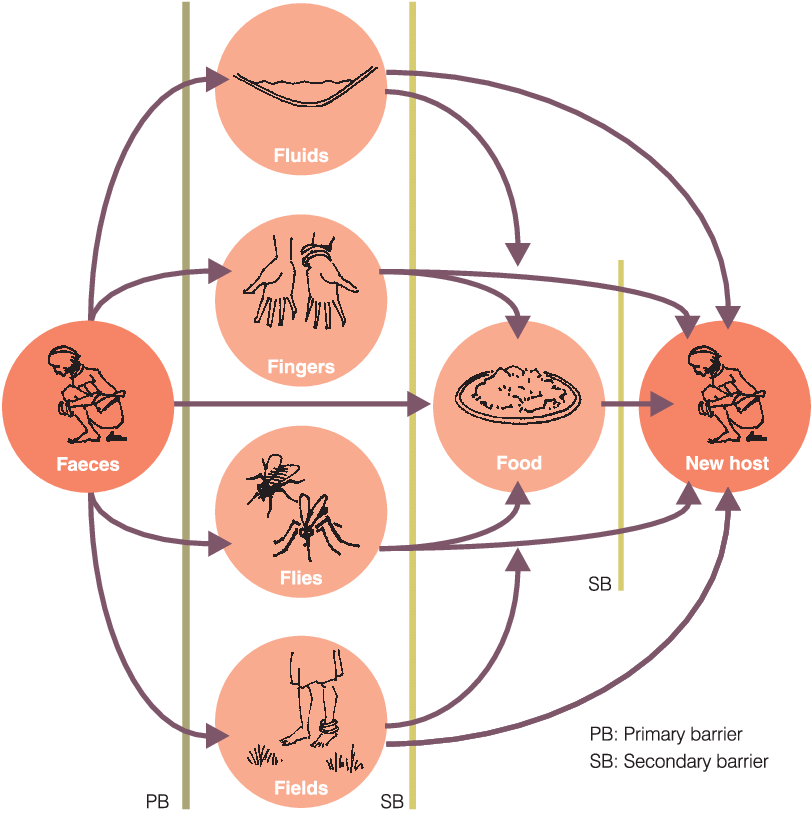Transmission of Faecal- borne Disease
Subject: Community Health Nursing I

Overview
One cause of infections, particularly in the gastrointestinal system, is human excretion. To ensure public health, proper disposal of human excreta (night soil) is crucial. In Nepal, it's common practice for people to urinate outside in public places that are left unattended.
The primary site of infection is human excreta from a sick person or a disease carrier. It contains the pathogen that spreads to a new host through a variety of channels:
- Water
- Fingers
- Flies
- Soil
- Food
Every civilization is accountable for the safe removal and disposal of waste to ensure that it doesn't endanger the public's health. The risks incorrect excreta disposal poses to human health:
- Soil contamination: If an infected person feces outside, the soil may become contaminated with hookworm and its ova.
- Water pollution: Drinking water can get contaminated by infected human excreta, such as when a cholera sufferer contaminates water and spreads the disease.
- Food contamination: People who make or serve food should properly wash their hands after using the restroom.
- Fly reproduction: Human excreta-borne bacteria can be transferred to food by flies. Typhoid, paratyphoid, diarrhea, cholera, worm infestation, giardiasis, viral hepatitis, and other intestinal infections are just a few of the illnesses that can spread from contaminated food containing human excreta.
Sanitation barrier
Community nursing and the current idea of community medicine both work to disrupt the disease cycle at key points. Although the cycle of sickness can be interrupted on many levels, including
- Separation of the sexes
- Food and water sources should be protected.
- Preserving one's personal hygiene
- Management of flies, etc.
However, separating the feces and making plans for their proper disposal is the most effective way to stop the disease agent from directly or indirectly reaching the new host. Simply put, this barrier can be created by a "sanitation barrier," with sanitary latrines serving as the primary method.

Things to remember
© 2021 Saralmind. All Rights Reserved.

 Login with google
Login with google